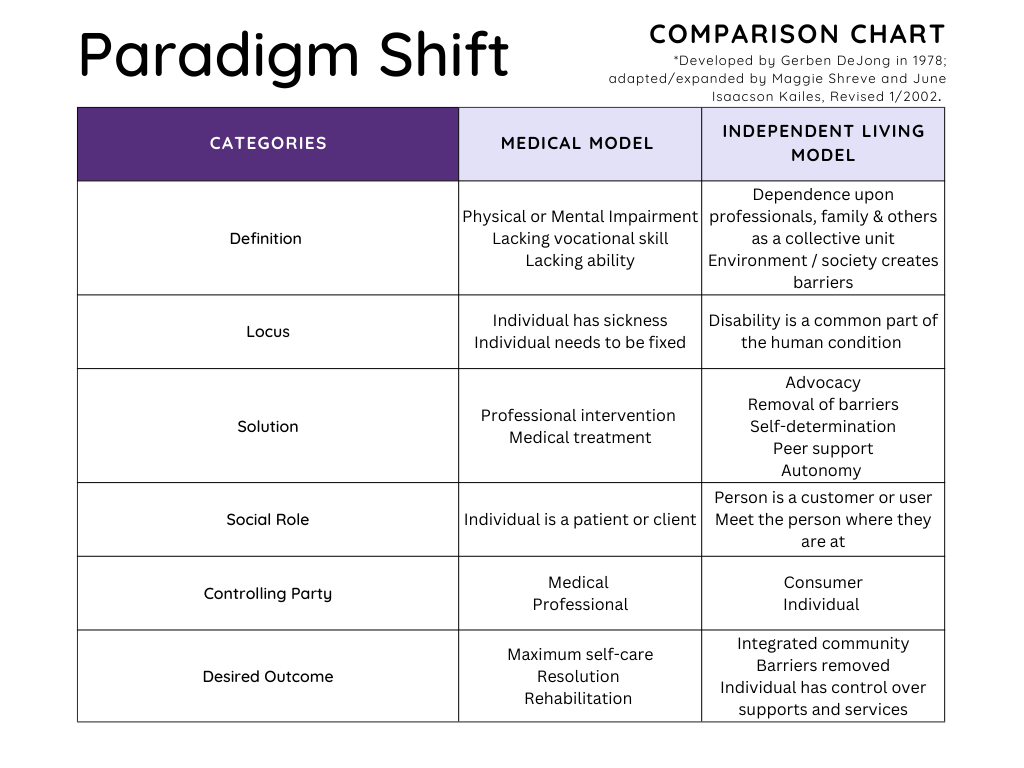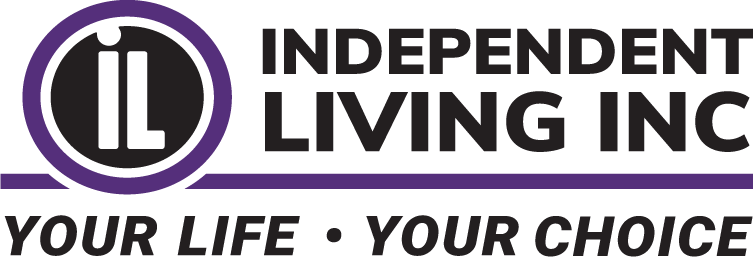A Paradigm Shift: Embracing the Social Model of Disability
July 2, 2023

As a foundation to Diversity, Equity and Inclusion as it relates to disabilities, it is important to know the difference between the Independent Living Model and the Medical Model, two opposing approaches to understanding and addressing disabilities. These models represent a fundamental paradigm shift in how we perceive and support individuals with disabilities. While the medical model focuses on treating disabilities as medical conditions to be fixed or accommodated, the independent living model recognizes disabilities as a social issue, advocating for equal rights, accessibility, and empowerment. In this blog, we will delve deeper into the dichotomy between these models and explore the transformative potential of embracing the social model of disability.
The medical model, the more commonly known structure, views disability primarily as a medical condition or impairment that needs to be treated or fixed. It focuses on diagnosing disabilities, providing medical interventions, and rehabilitating individuals to fit within the norms of society. In this model, the emphasis is on the individual’s limitations and the goal is to minimize or eliminate those limitations through medical interventions, therapies, or assistive devices. The medical model often places the authority and decision-making power in the hands of medical professionals.
The independent living model, on the other hand, identifies disability as a social issue rather than solely a medical one. It recognizes that the barriers and limitations faced by individuals with disabilities are often a result of societal attitudes, physical environments, and lack of accessibility. The independent living model promotes the idea that individuals with disabilities should have the same rights, choices, and opportunities as everyone else, enabling them to live independently and participate fully in society.
Key principles of the independent living model include:
- Self-determination: Individuals with disabilities have the right to make decisions about their own lives and be in control of the services and supports they need.
- Accessibility: Physical, social, and attitudinal barriers should be removed to ensure equal access and participation for individuals with disabilities.
- Peer Support: People with disabilities can provide valuable support and guidance to each other based on informed, lived experience.
- Advocacy: Promoting systemic change and advocating for disability rights is essential to achieving inclusivity and equality.
In contrast to the medical model’s focus on fixing or accommodating individual impairments, the independent living model aims to address and remove societal barriers that prevent disabled individuals from fully participating in all aspects of life. It places importance on empowering individuals with disabilities to live independently, make their own choices, and actively contribute to their communities.
Though not entirely mutually exclusive ideologies, the independent living model emphasizes a shift from a medicalized perspective to a social and rights-based approach, highlighting the need for inclusive policies, accessible environments, and the recognition of disability as an aspect of diversity rather than a medical problem to be solved.
If you are interested in writing a guest blog, let us know using button below.

